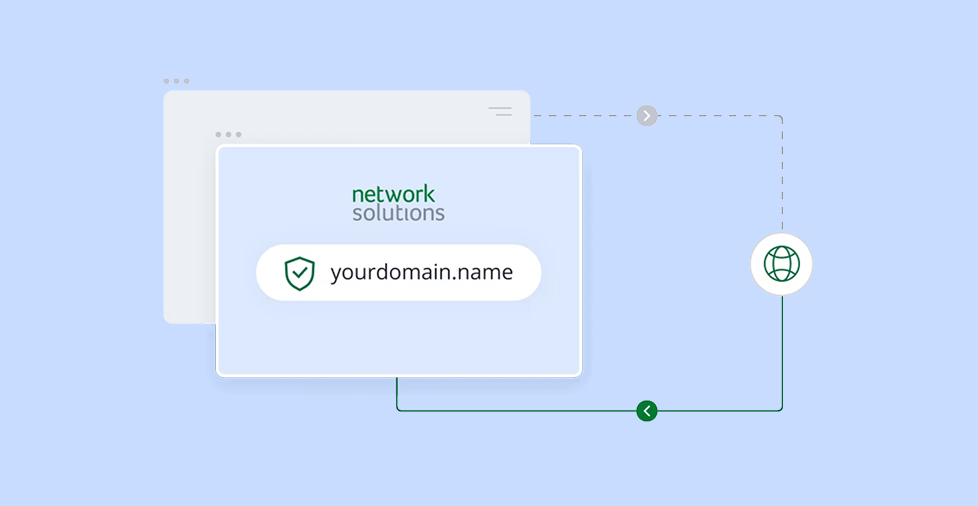Key takeaways:
- A domain transfer involves moving your domain from one registrar to another, and can take anywhere from a few hours to up to 14 days, depending on several factors.
- Key factors such as registrar policies, domain lock status, EPP code accuracy, and ICANN’s rules impact the speed of the transfer.
- To avoid delays, ensure your domain is unlocked, your contact info is up-to-date, and you’ve requested the necessary authorization code before starting the transfer.
Transferring your domain to a new registrar can be confusing if you’re not familiar with the process. One of the biggest concerns users face is not knowing how long the transfer will take.
This uncertainty can be more than just inconvenient. If your domain transfer causes downtime, even temporarily, it might affect your website, email, or business credibility. That’s why understanding the domain transfer timeline is important — especially if you rely on your domain for business or professional use.
In this guide, you’ll learn how long a domain transfer typically takes, what can delay it, and how to make the process as smooth as possible.
What is a domain transfer and why does it matter?
A domain transfer is the process of moving your domain name from one registrar to another. This means you’re changing who manages your domain’s settings, renewals, and overall control — not switching your hosting provider or changing where your website lives.
The process is initiated by the domain owner and requires a few security steps. These include unlocking the domain, requesting a transfer authorization code (also called an EPP code), and confirming the transfer with both the current and new registrar.
But why transfer your domain at all?
Many website owners choose to transfer their domains for a few common reasons:
- Lower renewal costs – Some registrars offer better pricing for annual renewals or bundled services.
- Better customer support – Switching to a registrar known for responsive, helpful service can make managing your domain easier.
- Service consolidation – Transferring your domain to a provider that also handles your hosting or email can simplify billing and tech support.
A domain transfer gives you more control over how you manage your website. And if done correctly, it won’t affect your site’s live status or performance.
What affects domain transfer time?
The time it takes to transfer to a domain can vary depending on several key factors. While some transfers are completed in a few hours, others may take several days. Understanding what influences domain transfer time can help you plan and avoid delays.
Here are the main factors that affect how long a domain transfer takes:
Registrar processing and policies
Every domain registrar has its own process and timeline for handling transfers. Some may begin processing your request immediately, while others can take several days to approve or release the domain.
You might encounter extra steps like:
- Pre-transfer verification or documentation
- Manual approvals that delay the start
- Longer wait times if support or systems are slower during weekends or holidays
Registrars with automated systems tend to complete transfers faster than those that rely on manual reviews.
Domain lock status
Most domains are automatically locked for security reasons. A locked domain cannot be transferred until it’s manually unlocked by the current registrar.
Some registrars unlock a domain immediately when requested. Others may require extra verification, which can add time to the process. Many users only discover their domain is locked when the transfer fails, so it’s a good idea to check lock status before initiating a transfer.
Authorization code (EPP code)
The authorization code, also known as the EPP code, is a password that verifies your ownership of the domain.
This code is required for any domain transfer. If the code is missing, incorrect, or delayed, your transfer will be stalled until the correct code is submitted.
While some registrars provide it instantly, others may take a few days depending on their process. Always request and confirm your code in advance to avoid unnecessary delays.
ICANN’s 60-day transfer rule
The Internet Corporation for Assigned Names and Numbers (ICANN) sets rules that impact domain transfer eligibility.
Two key policies that affect domain transfer time include:
- 60-day hold after registration or transfer – Domains cannot be transferred within 60 days of initial registration or a previous transfer.
- 60-day lock after WHOIS updates – If you recently changed your domain’s contact information (like email or name), a transfer lock may be applied.
To avoid hitting these restrictions, check your domain’s registration and update history before starting the process.
How long does the domain transfer process typically take?
The domain transfer process typically takes 5 to 7 business days. Some transfers may complete in just a few hours, while others can take up to 14 days depending on the domain type and registrar processing times.
The full transfer can be broken down into three key phases:
- Preparation
- Initiation and verification
- Transfer and completion
Each phase plays a role in how quickly — or slowly — your domain transfer is processed. Let’s take a closer look at what happens during each step.
Phase 1 – Preparation
Before anything can happen, you need to make sure your domain is eligible for transfer. Start by logging in to your current registrar account and checking the following:
- Unlock your domain. Most domains are locked by default as a security measure. You’ll need to manually unlock it.
- Disable domain privacy settings. Turn off domain privacy when needed. This is especially important for transfers or registration requirements. It ensures your contact info is visible as required.
- Ensure your contact information is up to date. Keep your email and contact details current. This will ensure you receive important domain notifications. It also helps avoid missing renewals or security updates.
- Request your EPP/Auth code. This is a unique authorization code required to confirm that you own the domain.
- Check for ICANN restrictions. If your domain was recently registered or transferred, or if you just updated your WHOIS information, you may need to wait until the 60-day transfer lock expires.
This phase can take anywhere from a few minutes to a couple of days, depending on how quickly you access your settings and whether your registrar automates these actions.
Phase 2 – Initiation and verification
Once you have your Auth code, you can initiate the transfer with your new registrar. Here’s what happens:
- You submit the transfer request and enter the EPP/Auth code.
- The current registrar is notified.
- You (the domain owner) will receive verification emails from both the current and new registrars. You’ll need to approve the transfer via email to move forward.
This phase usually takes a few hours to one business day, depending on how quickly you respond and how efficient the registrars’ systems are.
Phase 3 – Transfer and completion
After verification is complete, the current registrar has up to five days to release the domain, as allowed by ICANN rules. Once that happens:
- The new registrar finalizes the transfer.
- The domain’s records are updated.
- The transfer is complete, and management of the domain shifts to the new provider.
This final phase often takes 2 to 5 business days, depending on how fast your registrars operate and whether any issues arise.
How long does it take to transfer a .org domain?
A .org domain typically takes the same amount of time to transfer as a .com or .net domain — about 5 to 7 business days. These domains all follow similar rules under ICANN policies.
However, some top-level domains (TLDs) and country-code TLDs (ccTLDs) may follow different timelines or require additional steps. Here’s a quick comparison:
| TLD | Estimated transfer time | Notes |
| .org | 5–7 business days | Standard timing under ICANN rules |
| .com | 5–7 business days | Most common TLD — similar process to .org |
| .net | 5–7 business days | Follows same transfer guidelines |
| .uk | 1–2 business days | Requires IPS tag change instead of EPP code |
| .ca | 1–7 business days | Must meet CIRA registry requirements |
| .au | Up to 7 business days | Requires domain password and registry-specific checks |
Keep in mind that delays can still occur due to registrar-specific policies or pending verifications. Always check with your current and new registrar for any TLD-specific steps that may apply to your domain.
Is domain transfer instant?
Not usually. While some domain transfers can be completed within a few hours, this only happens under specific conditions — and it’s not the norm.
In most cases, domain transfers take 5 to 7 business days to complete. This is because the process requires multiple approvals, including:
- Confirmation from the domain owner via email
- Release of the domain from the current registrar (which can take up to 5 days)
- Acceptance and processing by the new registrar
That said, instant or near-instant transfers can happen when:
- The domain is unlocked ahead of time
- The authorization code (EPP) is submitted correctly
- Both registrars have fast, automated systems
- The domain owner approves the transfer immediately
Some providers allow expedited internal transfers between accounts, which can finish in under an hour. But for most inter-registrar transfers, expect several days — not minutes.
Move your domain, minus the downtime
Worried your domain transfer might take too long or disrupt your site or email? You’re not alone. It’s common to feel unsure about switching registrars — especially when delays, unclear steps, or lack of support get in the way.
At Network Solutions, we make it easier. With a guided domain transfer process, clear status updates, informative self-help articles, and expert help if you need it, you won’t be left guessing how domain transfers work.
Frequently asked questions
Yes, but it’s rare. If both registrars approve the transfer quickly and there are no delays, the process can be completed in just a few hours. However, most transfers take 5 to 7 business days.
Log in to your current registrar’s dashboard and make sure your domain is unlocked and at least 60 days old. If you recently updated your WHOIS info or transferred the domain, ICANN rules may place a 60-day hold.
Unlock your domain, request your EPP code, and approve all verification emails as soon as they arrive. Choosing a registrar with fast processing, like Network Solutions, also helps speed things up.
No, you’ll need to renew it first. Expired domains are considered inactive and must be in good standing to be eligible for transfer.
Not if your DNS settings stay the same. As long as your nameservers and hosting remain unchanged, your website and email services should continue without interruption.
Double-check your domain’s lock status and make sure the EPP code is correct. If you’re still having issues, contact both registrars and visit the Network Solutions Help Center for support.




